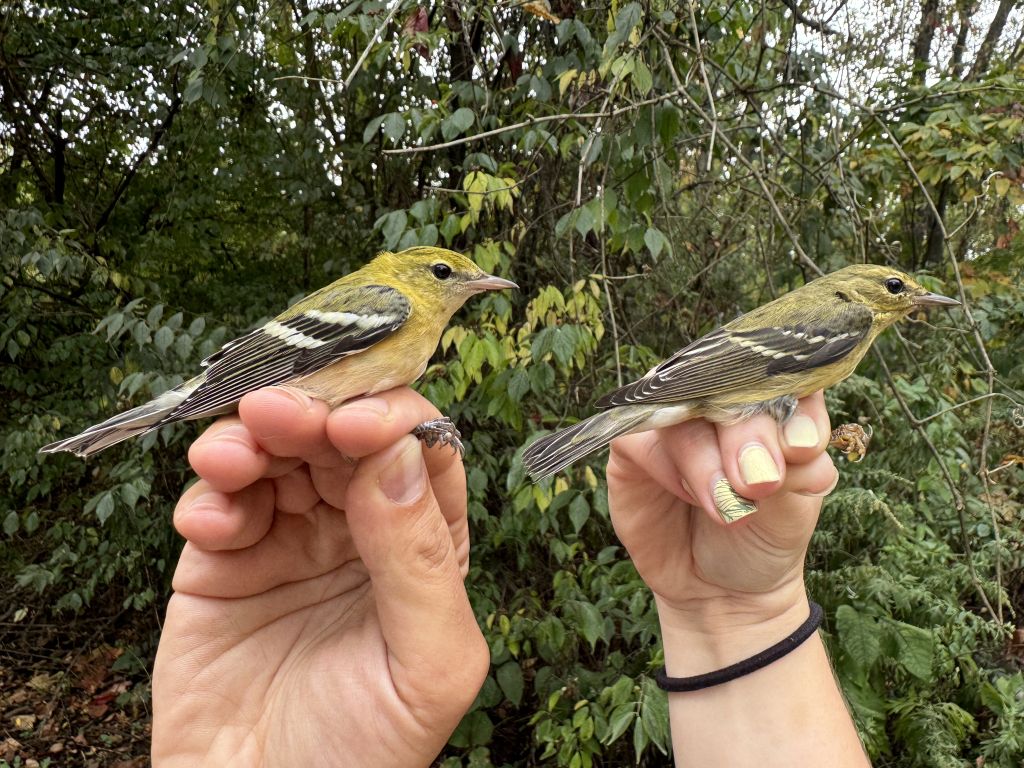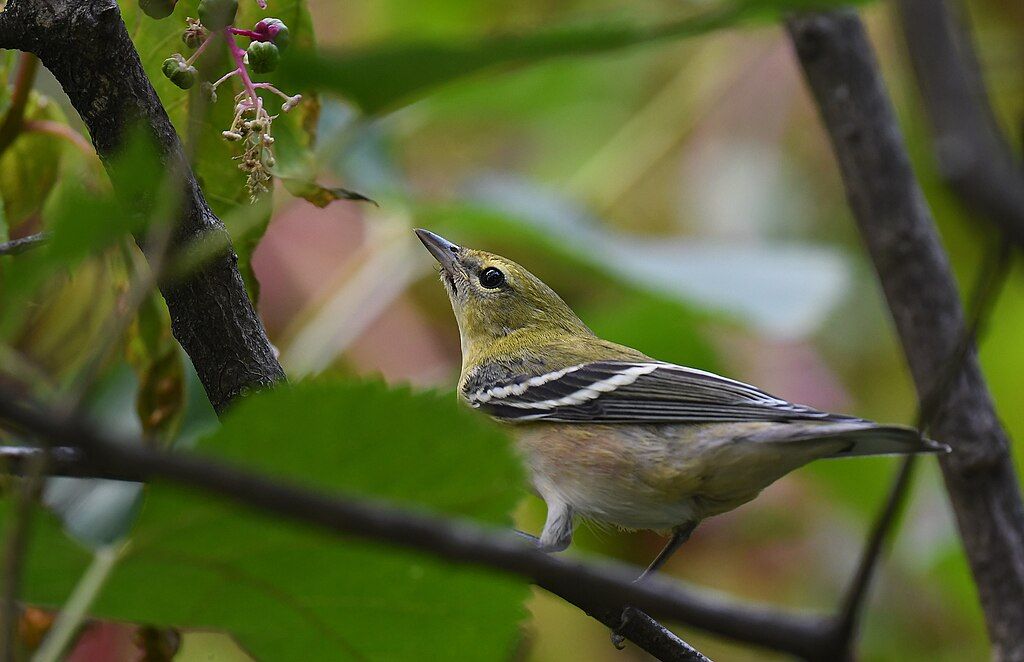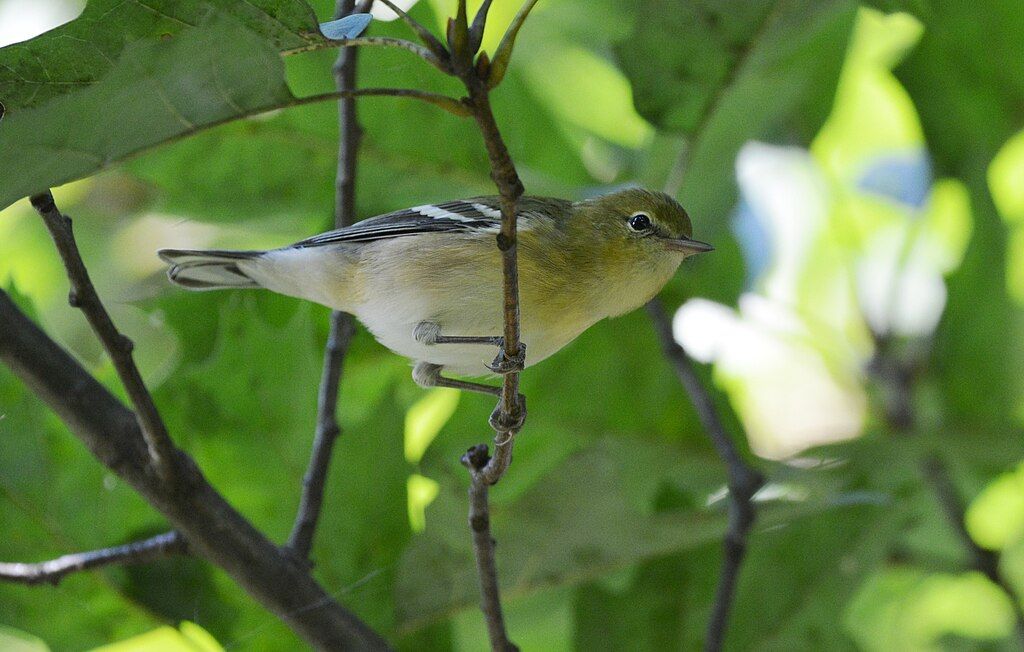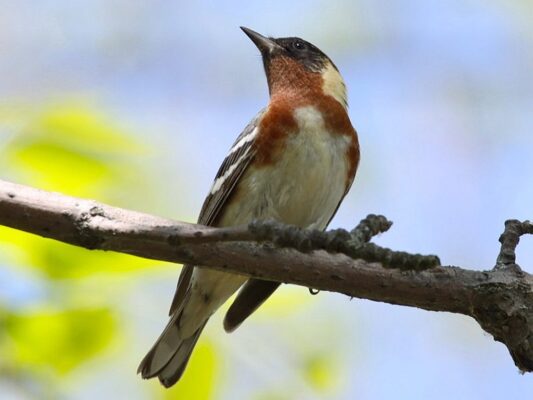
26 September 2024
Two species of North America’s fall warblers are so easy to mistake for each other that the pair has gained a nickname. Meet the “baypoll.”
On Tuesday I visited Bird Lab’s Hays Woods banding station for an up-close look at fall migrants. That morning Nick Liadis and Shana banded magnolia warblers, Swainson’s thrushes, Tennessee warblers, ovenbirds and many other species. Best Birds were the two pictured above, found in the same net at the same time: a bay-breasted warbler and a blackpoll warbler. Were they traveling together? Maybe. See yesterday’s blog.
These two species look so much alike in autumn that birders joke that they’ve seen a baypoll when they aren’t sure which one it is. Baypoll = BAY-breasted / blackPOLL. eBird doesn’t accept that designation, of course, but it’s useful for describing our frustration.
How can you tell the two apart?
In non-breeding plumage the bay-breasted warbler (Setophaga castanea) has bold wingbars with a dark bar between them and often, but not always, a faint bay (chestnut) wash on its flanks. It also has dark feet and an unstreaked breast. Compared to other warblers the bay-breasted looks long and bulky, not petite.


Blackpoll warblers (Setophaga striata) are striped, striata, where the bay-breasted is not. Even when the stripes are faint you’ll see them at the sides of the breast. Wingbars on blackpolls are pronounced but not as emphatic as on the bay-breasted. Blackpolls have a more definite eyeline than bay-breasted, but the real clincher for a blackpoll is its yellow-orange feet! The bird may have dark legs but it always wears golden slippers. I have spent many frustrating minutes waiting for a blackpoll to show me its feet.
Notice the feet on both birds in the top photo, sticking out above the bander’s thumb.


So next time you see a baypoll, check out its feet.
If you’d like to see birds up close during fall migration, visit Nick Liadis’ Bird Lab website and scroll down to the list of three banding locations — Hays Woods, Upper St. Clair and Twin Stupas in Butler County — with instructions for contacting him to set up an appointment.
Support Nick’s efforts with a donation at Bird Lab’s GoFundMe site.
p.s. In breeding plumage you’ll never confuse a bay-breasted with a blackpoll.

